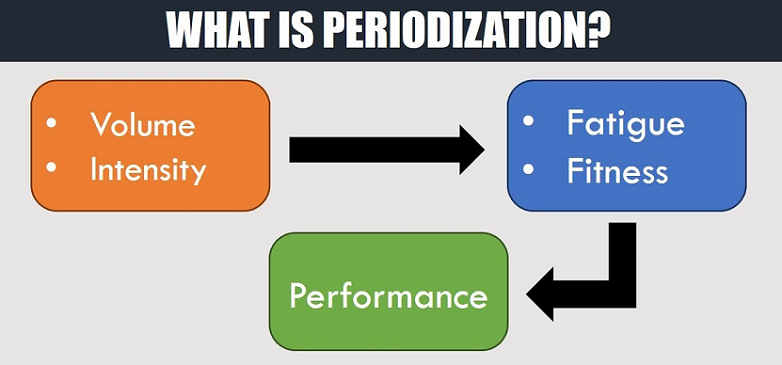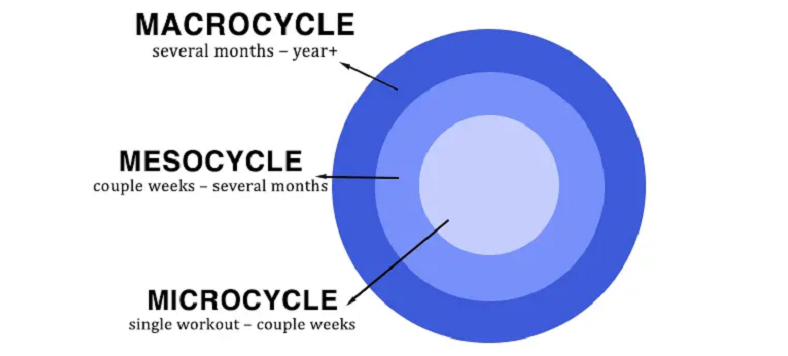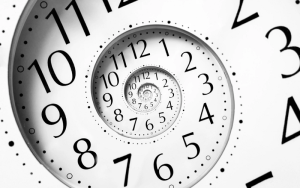
Are you hitting a wall with your workouts? Feel like you’re stuck in a rut, not making any headway despite the time and effort you’re putting in? Fitness plateaus can be frustrating, and they’re a common stumbling block for many fitness enthusiasts, no matter their level of expertise. You may be wondering, is there a science-backed strategy to break through these stagnant phases and continue making progress towards your fitness goals? The answer is a resounding yes, and it’s called periodization training.
Contents
Introduction to Fitness Plateaus
Every fitness journey, whether it’s about weight loss, muscle gain, or improved athletic performance, is rarely a straight line to success. One common stumbling block that many encounter is a fitness plateau. Understanding these plateaus is the first step towards breaking through them.
Definition of a Fitness Plateau
A fitness plateau is a phase where progress comes to a standstill. You’ve been following your workout routine consistently, maintaining your diet, but suddenly, the results just aren’t coming anymore. Your weight won’t budge, your muscle gain is stagnant, or your endurance isn’t improving, despite your efforts. Essentially, a plateau is when the status quo of your fitness level remains unchanged for an extended period.
Common Causes of Fitness Plateaus
Numerous factors can contribute to fitness plateaus. First and foremost is the body’s adaptation to exercise. When you start a new workout routine, your body responds because it’s a new challenge. However, over time, your body adapts to the regimen, and what was once challenging becomes the new normal. This adaptation results in fewer calories burned and less muscle stress, leading to a plateau.
Other common causes include overtraining, lack of rest and recovery, repetitive workouts, not increasing workout intensity, and nutritional deficiencies. Also, underlying medical conditions can cause plateaus, so it’s crucial to consult with a healthcare professional if you suspect this could be the case.
Impacts of Fitness Plateaus on Progress and Motivation
A fitness plateau can be a significant roadblock on your fitness journey. It can cause frustration and demotivation, leading many to abandon their fitness goals. However, hitting a plateau doesn’t mean you’ve reached your limits. Instead, it’s an indication that you need to change your approach. This is where periodization training comes into the picture. It introduces variability into your routine, helping to stimulate progress and keep you motivated on your journey towards achieving your fitness goals [1].

The Concept of Periodization Training
If fitness plateaus are the problem, periodization training can be the solution. It’s a systematic approach to training that can give your fitness journey the necessary shift to kickstart progress again. Understanding this concept is crucial before you begin implementing it in your routine.
Definition and Brief History of Periodization Training
Periodization training is a strategy that involves varying your workout routine over specific time periods to prevent adaptation and stagnation. Rather than sticking to a static workout routine, you would alter variables like intensity, volume, and type of exercise based on a pre-determined schedule.
The concept of periodization has been around for several decades. It was initially developed in the former Soviet Union for Olympic athletes and has since evolved and spread to various athletic and fitness disciplines worldwide. However, despite its origins in elite sports, periodization can be effectively applied to anyone’s fitness routine, regardless of their fitness level or goals [2].
Fundamental Principles of Periodization Training
Periodization training operates on a few key principles. Firstly, it aims to peak physical performance for important events or milestones. This is achieved by manipulating different aspects of a training program during various phases to ensure optimal performance when it counts.
Secondly, it allows for adequate recovery periods to prevent overtraining and injury. This is done by cycling through periods of varying intensity and volume.
Lastly, periodization combats boredom and helps to maintain motivation by continuously introducing variation into the workout routine.
Benefits and Importance of Periodization Training in Fitness
Periodization training comes with a host of benefits. The most important one is its effectiveness in overcoming fitness plateaus. By continuously challenging the body in different ways, periodization prevents the body from adapting to a routine, thus promoting continuous progress.
Additionally, it can help prevent overuse injuries that can occur from constant high-intensity training without adequate recovery. Periodization ensures that high-stress periods are followed by low-stress periods, allowing for recovery and growth.
Furthermore, periodization can make workouts more enjoyable and motivating. By regularly changing the routine, workouts stay fresh and exciting, which can help maintain motivation and adherence to the fitness plan [3].

How Periodization Training Tackles Fitness Plateaus
Now that we have a solid understanding of what periodization training is and its underlying principles, let’s delve into how it specifically tackles fitness plateaus. Periodization’s structured approach to variability is its secret weapon in overcoming these stagnant phases.
The Role of Variation in Overcoming Fitness Plateaus
Variation is a critical component in overcoming fitness plateaus. When you do the same workout repeatedly, your body adapts to it over time, leading to less energy expended and less stress on the muscles. This is when a plateau occurs.
Introducing variation means changing the stressors your body experiences. This can be achieved by manipulating workout variables such as the type of exercise, the intensity, the volume, and the rest periods between sets or workouts. By continuously changing these variables, you can keep your body guessing, which means it has to constantly adapt to the new stimuli. This process of continuous adaptation promotes progress and aids in breaking through plateaus [4].
Periodization Training as a Tool for Introducing Variability
Periodization is a highly effective way to incorporate variation into your workout routine. Instead of random changes, periodization uses a structured approach to change workout variables, aligning them with your fitness goals and the specific phase of training you’re in.
By breaking down your training plan into specific phases, you can focus on different aspects of your fitness in each phase. For example, you might focus on building endurance in one phase, strength in another, and power in a different phase. This ensures that your body is not only exposed to varied stimuli but also allows you to build a comprehensive fitness profile.
The Science Behind Periodization and Plateau Breaking
Periodization aligns with the body’s physiological adaptations to stress. When your body is exposed to a new stimulus (a different workout or a higher intensity), it responds by adapting to handle this stress better. This adaptation results in fitness improvements, such as increased muscle strength or improved cardiovascular endurance.
By systematically varying the training stimuli, periodization ensures that the body is continuously challenged to adapt. This continuous adaptation process leads to ongoing progress, effectively tackling fitness plateaus. Plus, by scheduling lower-intensity recovery periods, periodization also prevents overtraining, which can lead to stagnation or even regression in fitness levels [5].

Types of Periodization Training
Periodization training isn’t a one-size-fits-all strategy. It comes in various forms, each with its unique approach to structuring training. Understanding the different types of periodization can help you select the one that best suits your goals, lifestyle, and fitness level.
Linear Periodization
Linear periodization is the most traditional form of periodization. It involves a gradual increase in intensity and a decrease in volume over time. This type of periodization is typically divided into different phases such as the endurance phase, hypertrophy phase, strength phase, and peaking phase. Each phase lasts for several weeks or months and focuses on a specific aspect of fitness. Linear periodization can be effective for beginners and for long-term training plans aimed at peaking for a specific event.
Non-Linear or Undulating Periodization
Non-linear or undulating periodization varies the intensity and volume more frequently, often on a session-by-session or week-by-week basis. For example, you might have a high-intensity, low-volume workout one day, followed by a low-intensity, high-volume workout the next. This type of periodization can be beneficial for those looking to improve multiple aspects of fitness simultaneously, and it offers more flexibility and adaptability in response to changes in schedule or goal shifts.
Block Periodization
Block periodization focuses on developing one or two specific fitness aspects during each phase or ‘block’. These blocks typically last a few weeks and are sequenced strategically to build upon each other. This type of periodization may be ideal for more advanced athletes who need to target specific weaknesses or aim for a high level of peaking [6].
Choosing the Right Type of Periodization for You
The best type of periodization for you depends on various factors, including your fitness level, goals, and lifestyle. Beginners may benefit from the simplicity and structure of linear periodization, while more advanced exercisers might prefer the flexibility and specificity of non-linear or block periodization. It’s advisable to consult with a fitness professional or coach to help design a periodization plan tailored to your unique needs and objectives.
Implementing Periodization Training into Your Fitness Routine
Knowing about periodization is one thing, but applying it into your fitness routine is where the magic really happens. It requires a good understanding of your fitness goals, current fitness level, and a well-thought-out plan to make it work effectively.
Understanding Your Fitness Goals and Current Level
Before you begin periodization training, it’s crucial to identify your fitness goals and assess your current fitness level. Are you looking to improve your strength, endurance, or power? Or perhaps you’re aiming to get leaner or prepare for a specific event. Each goal requires a different approach to periodization. Similarly, your current fitness level determines the starting point of your periodization plan. Remember, periodization is about gradual progress, so it’s essential to start from where you currently are and work towards where you want to be.
Developing a Periodized Training Plan: An Overview
Once you have your goals and current level in place, the next step is to develop a periodized training plan. Here’s a simplified overview:
- Macrocycle: This is the broadest phase of your plan, typically spanning six months to a year. It outlines your overall fitness goal and the high-level strategy to achieve it.
- Mesocycle: The macrocycle is divided into several mesocycles, each lasting a few weeks to a few months. Each mesocycle focuses on a specific aspect of fitness like endurance, strength, or power.
- Microcycle: Each mesocycle consists of microcycles, which are usually a week long. These include daily and weekly workout plans, detailing the specific exercises, sets, reps, and intensity for each workout.
It’s important to sequence your mesocycles strategically. For instance, you might start with an endurance phase to build a fitness base, followed by a strength phase, and then a power phase.
Tips for Successfully Incorporating Periodization Training
Successfully incorporating periodization training into your routine requires consistency, flexibility, and patience. Here are a few tips:
- Be Consistent: Stick to your plan as closely as possible, but allow for some flexibility when needed.
- Monitor Your Progress: Regularly assess your progress to ensure you’re moving towards your goals. If not, you may need to tweak your plan.
- Rest and Recovery: Remember to include rest and recovery in your plan. They are crucial for avoiding overtraining and facilitating progress.
- Get Professional Guidance: If you’re new to periodization, consider seeking help from a fitness professional or coach to ensure your plan is well-structured and aligned with your goals.
References
[1] How Periodization Training Can Help You Reach Your Goals Faster
[2] Break the Plateau and Grow
[3] Current Concepts In Periodization of Strength and Conditioning for The Sports Physical Therapist
[4] Why You May Have Hit a Fitness Plateau
[5] 5 Benefits of Using Periodization with Personal Training Clients
[6] Overcome strength-training plateau with accentuated eccentric loading





